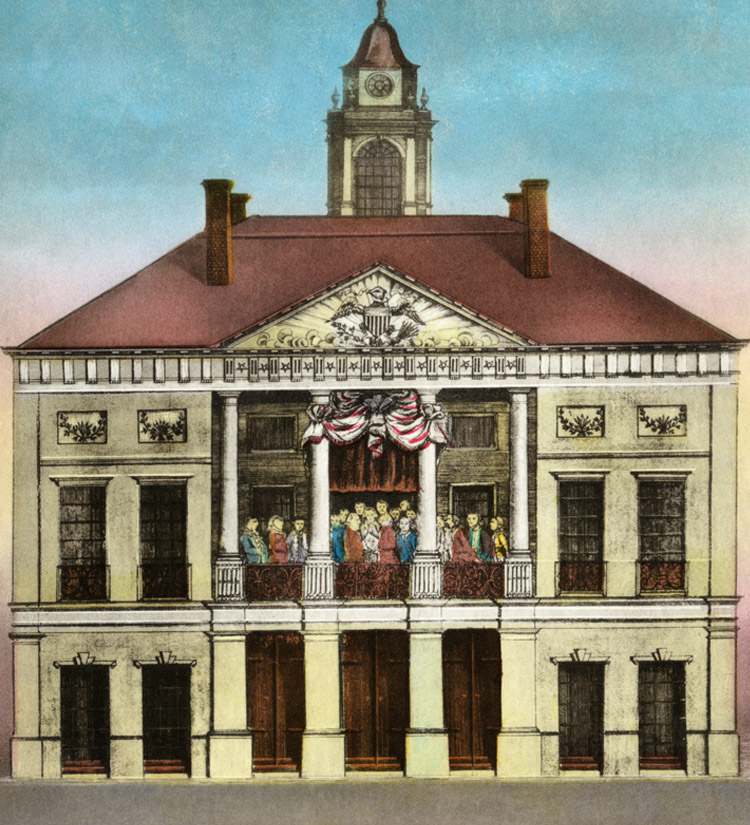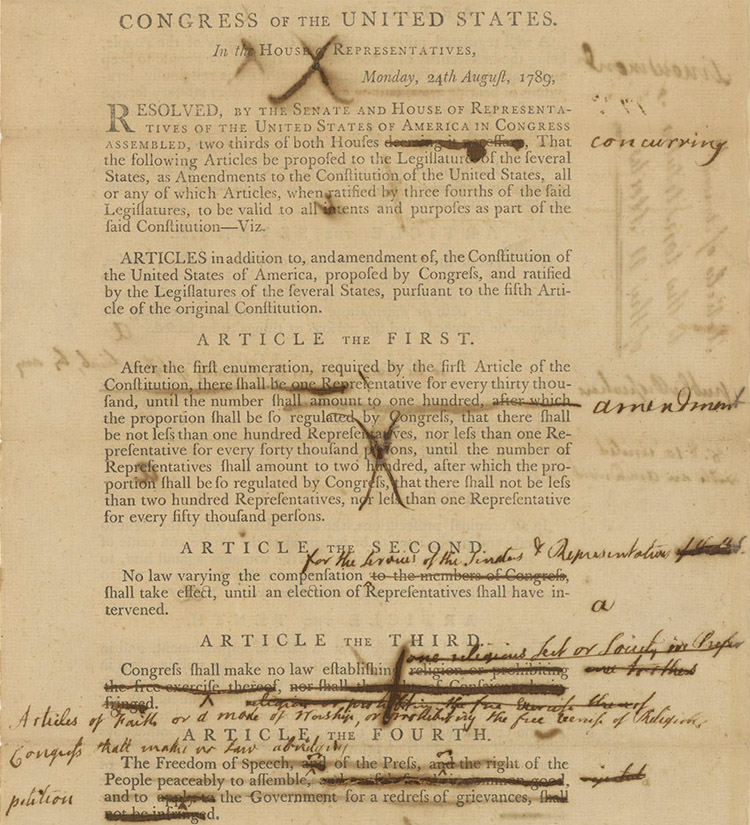
The Bill of Rights: How Did it Happen?
Writing the Bill of Rights
The amendments James Madison proposed were designed to win support in both houses of Congress and the states. He focused on rights-related amendments, ignoring suggestions that would have structurally changed the government.
Opposition to the Constitution
Many Americans, persuaded by a pamphlet written by George Mason, opposed the new government. Mason was one of three delegates present on the final day of the convention who refused to sign the Constitution because it lacked a bill of rights.
James Madison and other supporters of the Constitution argued that a bill of rights wasn't necessary because - “the government can only exert the powers specified by the Constitution.” But they agreed to consider adding amendments when ratification was in danger in the key state of Massachusetts.
Introducing the Bill of Rights in the First Congress
Few members of the First Congress wanted to make amending the new Constitution a priority. But James Madison, once the most vocal opponent of the Bill of Rights, introduced a list of amendments to the Constitution on June 8, 1789, and “hounded his colleagues relentlessly” to secure its passage. Madison had come to appreciate the importance voters attached to these protections, the role that enshrining them in the Constitution could have in educating people about their rights, and the chance that adding them might prevent its opponents from making more drastic changes to it.
Ratifying the Bill of Rights
The House passed a joint resolution containing 17 amendments based on Madison’s proposal. The Senate changed the joint resolution to consist of 12 amendments. A joint House and Senate Conference Committee settled remaining disagreements in September. On October 2, 1789, President Washington sent copies of the 12 amendments adopted by Congress to the states. By December 15, 1791, three-fourths of the states had ratified 10 of these, now known as the “Bill of Rights.”


